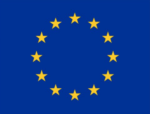JULY 2024 LIFE SCIENCE NEWS
EU AI Act Published in the Official Journal of the European Union; Clock Starts for Compliance
“On 12 July 2024, the EU AI Act (“AI Act”) was published in the Official Journal of the European Union. As the AI Act will enter into force 20 days from the date of its publication (1 August 2024), this starts the clock for organisations within the scope of the AI Act to prepare for compliance. The exact amount of time organisations have to comply with their relevant provisions under the AI Act will depend on the role they play under the AI Act, as well as the risk and capabilities of their AI systems. For example, providers[1] of general-purpose AI systems will be required to comply with the requirements of the AI Act before providers of high-risk AI systems.”
Most drug products recouped development costs within a decade of approval
“Between 1995 and 2014, a majority of new drugs and medicines approved by the US Food and Drug Administration (FDA) recouped the average cost of drug development through net discounted sales within a decade of their approval, according to results from a recent retrospective study published in the journal Value in Health. “Our findings suggest that most products had net discounted sales that exceeded the average costs of development within 10 years of approval. For these products, patents, data protection, and other regulatory exclusivities appear to provide brand-name drug makers with generous market protection…”
FDA finalizes combination product guidance 7 years after sharing draft
“Concerns about overlapping requirements between a 2011 FDA document about applying human factors engineering to medical devices and the 2016 draft guidance on combination product recommendations united the drug and device industries. PhRMA, the pharma equivalent to AdvaMed, called for clarity on what the draft added to the advice already provided in the 2011 device text. Since closing the comment period in 2016, the FDA has worked to address the concerns. The result is a Q&A document designed to be used in conjunction with the FDA’s 2011 device guidance and another document titled “Safety Considerations for Product Design to Minimize Medication Errors.”
European Commission drug shortage pilot study highlights industry, regulatory challenges
“The European Commission has published results from a pilot study to understand the challenges to ensuring safe drug supply chains. While the commission said that one of the major challenges was getting information about critical medical products, it also noted the study has many shortcomings, making it hard to interpret the data. During the COVID-19 pandemic, EU member states faced several critical drug shortages, which led the Commission and other stakeholders to investigate the underlying reasons for drug shortages and what to do about them. In December, the Commission, the Heads of Medicines Agencies (HMA), and the European Medicines Agency (EMA) published a list of 200 critical medicines facing potential shortages.”
JUNE 2024 LIFE SCIENCE NEWS
MDCG 2024-10 Clinical Evaluation of Orphan Medical Devices
“The MDCG has released a guidance document concerning the Clinical Evaluation of Orphan Medical Devices. As defined in the guidance document, for a device to be considered an orphan device, it must be a medical device that is specifically intended to benefit patients in the treatment, diagnosis and prevention of a disease that presents in not more than 12,000 individuals per year in the EU…The level of clinical evidence that is required to place medical devices on the market has been increased by the MDR, including an increased need for pre-market clinical investigations for certain higher risk devices to verify their safety and clinical performance. As one can imagine, this increased requirement to provide more clinical evidence can present many challenges for devices that are specifically intended to be used in rare medical conditions.”
New MSU study finds systematic biases at play in clinical trials
“Randomized controlled trials, or RCTs, are believed to be the best way to study the safety and efficacy of new treatments in clinical research. However, a recent study from Michigan State University found that people of color and white women are significantly underrepresented in RCTs due to systematic biases. The study, published in the Journal of Ethnicity in Substance Abuse, reviewed 18 RCTs conducted over the last 15 years that tested treatments for post-traumatic stress and alcohol use disorder. The researchers found that despite women having double the rates of post-traumatic stress and alcohol use disorder than men, and people of color having worse chronicity than white people, most participants were white (59.5%) and male (about 78%).”
Experts advise against prescriptive FDA policies for regulating AI
“Experts said that any future framework for regulating artificial intelligence (AI) by the US Food and Drug Administration (FDA) should avoid being overly prescriptive. They also urged greater collaboration between industry partners for developing best practices for using AI. Pharmaceutical and medical device industries need to be very specific in what they hope to achieve with AI, said experts at the RAPS Regulatory Intelligence Conference on 7 June. The panel was moderated by Chris Whalley, director, regulatory intelligence at Pfizer, and featured commentary from Bradley Thompson, RAC, who leads Epstein, Becker & Green’s AI practice, Sam Kay, vice president for pharmaceuticals at Basil Systems, Gopal Abbineni, director of regulatory strategy for medical devices at Bayer, Elizabeth Rosenkrands Lange, senior director and head of US global regulatory for EMD Serono/Merck.”
 Assessing Industry Impact of FDA’s LDT Final Rule
Assessing Industry Impact of FDA’s LDT Final Rule
“As laboratory developed tests (LDTs) have become more advanced and complex, their safety and effectiveness have also generated increased FDA scrutiny. This spring, agency officials took the bold step of identifying LDTs as regulated medical devices, planting the seeds that discretionary treatment and lack of expectations when meeting pre-market or post-market regulatory requirements that has been granted for years, is coming to an end. In a final rule that was issued April 29, FDA announced that an amendment to its regulations now stipulates that in vitro diagnostics (IVDs) are considered devices under the Federal Food, Drug, and Cosmetic Act (FDCA), including instances in which the manufacturer of an IVD is a laboratory.”
MAY 2024 LIFE SCIENCE NEWS
Neuralink gets FDA approval to implant chip into second patient
“Elon Musk’s human tech startup Neuralink has received the green light from the U.S. Food and Drug Administration to implant a brain chip into a second patient after it proposed to fix a problem that occurred with the first patient. Earlier this month, Neuralink reported that the first chip implanted into a human’s brain malfunctioned after several threads recording neural activity retracted from the brain. The threads retracted in the weeks following the surgery in late January that placed the Neuralink hardware in 29-year-old Noland Arbaugh’s brain, the company said.”
Artificial Intelligence and Machine Learning Through the Eyes of the FDA
“One of the points that came up that I thought was interesting was FDA’s experience with submissions that include AI and machine learning components. What I described was that since 2016, we’ve received over 300 submissions with AI and machine learning components across different stages of drug development, with the vast majority being in clinical research. The other topic that came up was FDA’s role in enabling this technology across the spectrum. We also discussed the fact that a lot of AI is being used in drug discovery, whether you’re predicting a molecule that could be a target for a clinical trial or the folding of a protein. This is generally outside of what FDA would look at, because eventually these therapeutics would enter through clinical testing, which is where the FDA would look at this data.”
 FDA’s Reorganization Approved for Establishing Unified Human Foods Program, New Model for Field Operations and Other Modernization Efforts
FDA’s Reorganization Approved for Establishing Unified Human Foods Program, New Model for Field Operations and Other Modernization Efforts
“The reorganization will enable the FDA to be more efficient, nimble and prepared for the ever-changing and complex industries we regulate, new food and medical product technologies, as well as the impacts of globalization, climate change and other factors that require the agency to quickly adapt. “This is a distinctive moment for the FDA. I’m very pleased to see that after a year and a half of arduous work and effort put into this transformative vision for the FDA Human Foods Program and the architecture of the agency, we are a step closer to seeing the largest reorganization of the agency in recent history come to life this fall,” said FDA Commissioner Robert M. Califf, M.D. “This reorganization has been a major undertaking for the FDA, and I am proud of what we will be able to accomplish more efficiently and collaboratively to better meet our public health mandate.”
 Device experts offer tips on handling warning letter, 483 responses
Device experts offer tips on handling warning letter, 483 responses
“One of the most common technical questions posed to US Food and Drug Administration (FDA) officials by manufacturers is the agency’s expectation for responding to a Form 483 or warning letter. Many people believe that a company is required to respond to a Form 483 within 15 calendar days, but this isn’t true, Gina Brackett, division 1 director, compliance branch at the Office of Medical Device and Radiological Health Operations (OMDRHO), Office of Regulatory Affairs (ORA) within FDA, told attendees during the 2024 MedCon conference, sponsored by the AFDO/RAPS Healthcare Products Collaborative and FDA. “First of all, you’re not required to respond to an FDA 483,” Brackett said. The 15 calendar day deadline for response, she explained, is if the agency is considering a warning letter. “[I]f you want your response included in that warning letter, then you need to respond in the 15 calendar days.”
APRIL 2024 LIFE SCIENCE NEWS
FDA finalizes much-needed rule to regulate laboratory-developed tests
CSPI applauds the Food and Drug Administration’s final rule regulating laboratory-developed tests (LDTs) published today. LDTs, a subset of in-vitro diagnostic tests, are commonly used by patients and healthcare providers to inform treatment decisions, yet they have operated without regulatory oversight for decades. The final rule addresses a long-standing regulatory gap and safeguards patients from potentially unreliable diagnostic tests. “As the complexity and importance of these tests in healthcare have increased, ensuring their accuracy has become more crucial,” said Dr. Peter Lurie, President of the Center for Science in the Public Interest, who while an Associate Commissioner at FDA in 2015, led a report outlining some of the dangers of unregulated LDTs. “This rule is long overdue and will usher in a new era of accountability and heightened consumer protection.”
FDA launches new clinical trial center to improve innovation, communication
The US Food and Drug Administration’s (FDA) Center for Drug Evaluation and Research (CDER) has launched a new center for internal and external experts to discuss new methods for designing and conducting clinical drug trials, dubbed the Center for Clinical Trial Innovation (C3TI). The center will act as a hub to share lessons learned from its other clinical trial initiatives with the drug development community and is meant to promote clinical trial innovation. “C3TI will be a central hub within CDER to support the implementation of innovative approaches to clinical trial design and conduct,” said Kevin Bugin, deputy director of operations in the Office of New Drugs (OND) who has been appointed to lead C3TI. “C3TI’s mission is to promote existing and future CDER clinical trial innovation through enhanced communication and collaboration.”
 European Parliament Votes in Favor of Amendment Extending MDR, IVDR Timelines
European Parliament Votes in Favor of Amendment Extending MDR, IVDR Timelines
The European Parliament has voted overwhelmingly in favor of an amendment to extend transition timelines for the Medical Devices Regulation (MDR) and In Vitro Diagnostic Medical Devices Regulation (IVDR).The vote occurred on February 16 following a plenary meeting of the European Parliament, and represents a significant step towards a formal extension of MDR and IVDR compliance deadlines for some device manufacturers. The amendment will enter into force on the date of its publication in the Official Journal of the European Union (OJEU), but first the amendment must be adopted by the European Council (expected by the end of February). Following adoption by the European Council, the formal process of publication in the OJEU may begin, and typically takes up to 30 days.
FDA readies staff, device makers for QMSR
“Now that the Quality Management System Regulation (QMSR) final rule has been published, the US Food and Drug Administration (FDA) is working to implement the transition, both internally and externally. The decision to make the transition from Quality System Regulation (QSR) was easy, Keisha Thomas, director of compliance and quality with the Office of Product Evaluation and Quality (OPEQ) at the Center for Devices and Radiological Health (CDRH) in FDA, told attendees during the 2024 MedCon conference, sponsored by the AFDO/RAPS Healthcare Products Collaborative and FDA. The task of implementing the transition, however, is “not at all easy,” she said, and involves preparing both agency staff and external stakeholders.”











